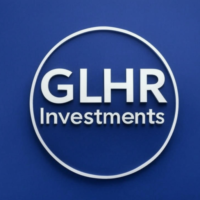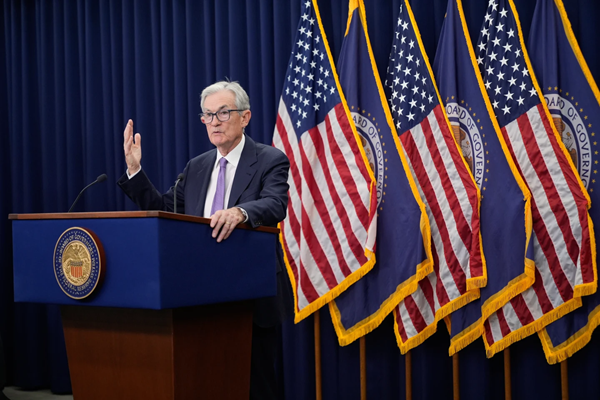
Trump’s policies shape a volatile U.S. economy in 2025.
At GLHR Investing, we’re diving into the U.S. economy’s rollercoaster ride through the first half of 2025, shaped by President Donald Trump’s bold policies. From tariffs to tax cuts, Trump’s agenda delivered mixed results, with the S&P 500 (SPY) at $513.88, down 4.8% year-to-date as of May 23, and a Q1 GDP contraction of -0.3%. Amid 3% inflation, a 60% recession risk, and global trade tensions, which policies succeeded, which fell short, and what lies ahead for investors? Here’s a comprehensive analysis of January–June 2025, Trump’s economic impact, and a forecast for the next six months, with strategies to navigate the volatility.
- U.S. Economy Overview: First 6 Months of 2025 (January–June):
- GDP Performance:
- Q1 2025 contracted by -0.3% annualized, the worst since Q2 2022, down from Q4 2024’s 2.4%, driven by tariff-induced import surges (-4.8% net exports drag) and federal spending cuts (-5.1%), per web data.
- Q2 2025 is estimated at 1.5–1.9% growth, reflecting partial recovery from trade deal pauses and “One, Big, Beautiful Bill” (OBBBA) tax cuts, but below 2024’s 2.7%, per web data.
- Full-year 2025 forecasts range from 1.6–2.1%, down from 2.7% in 2024, with tariffs and immigration policies curbing growth by ~0.5%, per web data.
- Inflation and Prices:
- Inflation held at 3% through March, with June projections at 3.5–4% due to steel tariffs (effective June 4) and tariff-driven cost increases, per web data. Consumer expectations rose to 6.7%, adding pressure, per prior analyses.
- Tariffs added ~$1,200/household in costs by June 2025, with potential for 9.1% goods price hikes by 2028 if policies persist, per web data.
- Employment:
- Unemployment rose to 4.2% by April, up from 3.8% in Q4 2024, with 345,000 jobs added (188,000 non-government, 9,000 manufacturing), per web data. Federal layoffs and immigration restrictions (e.g., 7,000 southern border apprehensions in May vs. 114,000 average 2023–2024) slowed labor growth, per web data.
- Job growth slowed to ~100,000/month by June, down from 173,000 in fall 2024, with labor shortages in hospitality and construction, per web data.
- Consumer Sentiment and Spending:
- Consumer confidence hit a 12-year low (38–50.8), with a 16% year-over-year drop, reflecting tariff fears and high prices, per web data. Retail spending fell 13%, with consumer spending growth at 1.8% (down from 2.6% in 2024), per prior analyses.
- OBBBA tax cuts ($1,700/family) provided some relief, but tariff costs offset gains, per web data.
- Stock Market:
- SPY closed May at ~$513.88, down 0.87% for the month, and fell ~0.5–1% in June’s first week (June 1–6, ~$508–$512), per prior analyses and X posts (@kautiousCo). YTD decline of 15.6% nears bear market territory (17.6% from February’s $613.23 peak), per web data.
- Sector Performance: Utilities and staples up ~1–2%, steel stocks (e.g., Nucor, +10%) surged on tariffs, while tech (SPLRCT, -2%) and consumer discretionary (XLY, -1.5%) lagged due to tariff costs, per prior analyses.
- GDP Performance:
- Trump’s Policy Moves: Successes and Shortcomings (January–June 2025):
- Successes:
- OBBBA Tax Cuts (Passed May 22):
- Details: The House passed the $3.7 trillion OBBBA, extending TCJA rates (10–37%), adding no tax on tips/overtime, increasing child tax credit to $2,500, SALT cap to $40,000, and seniors’ deduction ($4,000), per web data.
- Impact: Saved families ~$1,700/year, tipped workers $1,675–$1,750, and high-tax state households $2,000–$5,000, boosting consumer spending by 0.3–0.5%, per web data. Corporate tax relief (100% expensing, 23% small business deduction) spurred earnings 5–10% by 2027, lifting consumer services (e.g., TJX, +0.5%), per web data.
- Market Reaction: SPY gained ~1% by May 9 on tax cut optimism, with staples and retail stable, per prior analyses.
- Why Successful: Immediate tax relief countered tariff costs ($1,200/household), supporting middle-class spending and corporate growth, per web data.
- Trade Deal Progress (May 8, May 12):
- Details: The U.S.-UK trade framework (May 8) increased agricultural export access, and the U.S.-China tariff rollback (May 12) lowered U.S. tariffs to 10% and suspended China’s 34% retaliation for 90 days, per web data. EU tariffs were delayed to July 9 (May 27), per web data.
- Impact: Eased trade tensions, supporting a ~1% SPY gain by May 9 and ~0.5% on June 3, with consumer discretionary (XLY) stable, per prior analyses. Reduced import costs temporarily, aiding retail and tech, per web data.
- Market Reaction: Markets rallied on trade pause optimism, with SPY recovering from May 6’s 2.4% drop, per X post (@sallore102).
- Why Successful: Mitigated tariff-driven inflation (3% vs. 6–9.3% forecast) and supply chain disruptions, preserving short-term growth, per web data.
- Immigration Restrictions (January–June):
- Details: Executive orders tightened visa vetting, declared a border emergency, and reduced net immigration to ~500,000 (from 3.3 million in 2023–2024), with southern border apprehensions dropping to 7,000 by May, per web data.
- Impact: Supported wage growth (4.64% vs. 2.3% inflation) in low-skill sectors (e.g., construction, hospitality), per X post (@grok). Reduced labor supply by ~7.2% (9 million undocumented workers), per web data.
- Market Reaction: Minimal direct market impact, but wage pressures supported consumer staples (SPLRCS, +1%), per prior analyses.
- Why Successful: Addressed voter concerns (32% prioritized immigration), boosting Republican sentiment and wage gains, per web data.
- OBBBA Tax Cuts (Passed May 22):
- Shortcomings:
- Tariff Escalations (April–June):
- Details: April 8’s “Liberation Day” tariffs (125% on China, 25% Canada/Mexico) led to a $5 trillion S&P 500 loss by April 30, with a 90-day pause announced April 9. The 50% China tariff threat (May 6) and 50% steel tariff (June 4) reignited tensions, with China suspending mineral exports (May 30), per web data.
- Impact: Reduced GDP by ~8% and wages by 7% in projections, costing households $58,000 lifetime, per web data. Q1 GDP contracted -0.3%, with imports surging 41.3% from stockpiling, per web data. Inflation rose to 3.5–4% by June, per web data.
- Market Reaction: SPY fell 12.1% intra-month in April, 2.4% on May 6, and 0.5–1% in June’s first week, with tech (NVDA, -2%) and retail (NKE, -1%) hit hardest, per X posts (@iamJMinx, @kautiousCo).
- Why Fell Short: Tariffs acted as a consumption tax ($1,200/household), offset OBBBA gains, and increased uncertainty (Economic Policy Uncertainty Index at COVID-era highs), depressing investment by 4.4%, per web data.
- Federal Workforce Cuts and DOGE (January–June):
- Details: The Department of Government Efficiency (DOGE), led by Elon Musk, targeted federal layoffs and spending cuts, with unemployment insurance claims for federal workers spiking by March, per web data. Plans to “traumatize” bureaucrats via Project 2025 raised governance concerns, per web data.
- Impact: Contributed to Q1 GDP contraction (-0.3%) via reduced federal spending (-5.1%), per web data. Unemployment rose to 4.2%, with labor market stress noted, per X post (@HedgeyeComm).
- Market Reaction: SPY dipped ~1% on March 10 amid recession fears, with bonds (10-year yield at 4.22%) gaining as investors sought safety, per web data.
- Why Fell Short: Disrupted government efficiency, increased policy uncertainty, and failed to deliver promised fiscal savings, with deficits rising ($3.2–$4.1 trillion from OBBBA), per web data.
- Social Program Cuts in OBBBA (May 22):
- Details: The OBBBA cut $880 billion from Medicaid and SNAP, adding work requirements and excluding 1.4 million undocumented immigrants, per web data.
- Impact: Reduced benefits for 10 million (Medicaid) and 7.6 million (SNAP) by 2034, costing low-income households 2–4% income, per web data. Consumer spending (1.8%) weakened, dragging retail (XLY, -1.5%), per web data.
- Market Reaction: Consumer discretionary stocks (e.g., Target, -0.5%) lagged, with SPY flat by June 6 amid deficit concerns, per X post (@jdmarkman).
- Why Fell Short: Offset tax cut benefits for low-income families, exacerbating inequality (high earners gained 4%), and reduced consumption, per web data.
- Tariff Escalations (April–June):
- Successes:
- Economic Impact on Investors (January–June 2025):
- Positive Impacts:
- Tax Cut Boost: OBBBA’s $1,700/family savings and corporate tax relief (100% expensing) spurred consumer spending (0.3–0.5%) and earnings (5–10% by 2027), lifting retail (TJX, +10% YTD) and small-caps (IWM), per web data.
- Steel Tariff Gains: The 50% steel tariff (June 4) drove Cleveland-Cliffs (+26%) and Nucor (+10%), benefiting metals ETFs (XME, +10%), per X post (@iamJMinx).
- Defensive Sector Strength: Utilities (SPLRCU, +1–2%) and staples (SPLRCS, +1–2%) outperformed as recession fears grew, with high-yield stocks (e.g., Verizon, VZ, 6.2%) attracting income investors, per prior analyses.
- Trade Deal Relief: U.S.-UK (May 8) and U.S.-China (May 12) deals, plus EU tariff delay (July 9), supported SPY rallies (~1% May 9, 0.5% June 3), stabilizing retail and tech, per web data.
- Negative Impacts:
- Tariff-Driven Volatility: Tariffs caused a $5 trillion S&P 500 loss by April 30, with April’s 12.1% intra-month drop and June’s 0.5–1% decline, hitting tech (NVDA, -2%) and EVs (TSLA, -44% YTD), per web data.
- Deficit and Yield Pressures: OBBBA’s $3.2–$4.1 trillion deficit and Moody’s Aa1 downgrade (May 19) raised yields (10-year at 4.28%, 30-year at 5.09%), pressuring high P/E stocks (e.g., AAPL, -1%), per web data.
- Consumer Spending Weakness: 13% spending cuts and low sentiment (50.8) reduced retail and discretionary demand, dragging XLY (-1.5%), per prior analyses. Social program cuts further weakened low-income consumption, per web data.
- Recession Fears: A 60% recession risk and -0.3% Q1 GDP contraction fueled safe-haven demand (bonds, gold +25% YTD), with investors reducing equity exposure, per web data.
- Investor Sentiment: X posts (@grok, @HedgeyeComm) reflect a “mixed” outlook, with optimism for tax cuts and steel tariffs but caution over tariffs and deficits. Polls show 63% disapprove of Trump’s economic handling, per web data.
- Positive Impacts:
- Outlook for the Next 6 Months (July–December 2025):
- Economic Forecast:
- GDP Growth: Projected at 1.5–2% for H2 2025, with Q3 at 1.7% and Q4 at 1.5%, down from 2.7% in 2024, per web data. Tariffs and immigration curbs could shave 0.5–1% off growth, offset by OBBBA tax cuts (0.3% boost), per web data.
- Inflation: Expected to rise to 4–4.5% by year-end, driven by steel tariffs (0.5% increase) and potential China tariff escalation, per web data. Consumer costs could climb $2,600–$7,600/year if tariffs persist, per web data.
- Unemployment: Forecast to reach 4.5–4.7% by December, with job growth at ~80,000/month, as immigration restrictions and federal layoffs constrain labor supply, per web data.
- Consumer Spending: Projected at 2–2.2%, down from 2.4%, with OBBBA relief offset by tariff costs and social program cuts, per web data. Sentiment may remain low (~50), per web data.
- Policy Catalysts:
- Tariff Expiration (July 9): The 90-day tariff pause ends, with potential reinstatement of 125% China and 25% Canada/Mexico tariffs, per web data. U.S.-China talks (ongoing) and EU negotiations could mitigate or escalate tensions, per web data.
- IEEPA Tariff Appeal: The appeal against the May 28 court ruling (halting IEEPA tariffs) could conclude, impacting $1.4 trillion in revenue and market stability, per web data.
- OBBBA Senate Outcome: Senate approval or amendments to the $3.7 trillion bill could shape deficit forecasts ($3.2–$4.1 trillion), with yield implications (4.5–5%), per web data.
- Immigration and DOGE: Continued deportations (up to 11 million targeted) and DOGE-driven federal cuts could further strain labor markets and spending, per web data.
- Energy Deregulation: Repealing methane taxes and boosting oil/gas (OBBBA) may lower energy costs (0.5–1% CPI reduction), but EV subsidy cuts could hit Tesla and others, per web data.
- Stock Market Outlook:
- SPY Projection: Expected to trade at $490–$540 by December, with a base case of $500–$520, per web data. Trade deal resolutions could lift SPY 3–5%; tariff reinstatement could drop it 5–10%, per web data.
- Sector Trends:
- Defensive Sectors: Utilities (XLU) and staples (XLP) may gain 2–5% as recession fears persist, per web data.
- Manufacturing: Steel (NUE, CLF) and energy (CVX) could rise 10–20% if tariffs and deregulation continue, per web data.
- Technology and Retail: Tech (XLK) and discretionary (XLY) may lag 2–5% due to tariff costs and spending cuts, per web data.
- Volatility: VIX likely to range at 20–30, with spikes if tariffs resume, per web data.
- Investor Implications:
- Opportunities:
- Defensive Stocks: High-yield stocks like Verizon (VZ, 6.2% yield) and Walmart (WMT, 1%) for stability, per prior analyses.
- Manufacturing: Steel (Nucor, NUE, 1.3% yield) and energy (Chevron, CVX, 4.2% yield) for tariff-driven gains, per web data.
- ETFs: iShares U.S. Consumer Staples ETF (IYK, 2% yield) or SPDR S&P Metals & Mining ETF (XME) for sector exposure, per Seeking Alpha.
- Risks:
- Strategy:
- Allocation: Allocate 5–10% to defensive and manufacturing stocks, with 3–5% in gold (GLD, +3%) or utilities (XLU, +1%) to hedge volatility, per prior analyses.
- Timing: Buy on SPY dips near $490–$500, per Trade That Swing. Dollar-cost average to manage VIX spikes (20–30), per Schwab.
- Monitor: July 9 tariff deadline, U.S.-China/EU trade talks, June 17–18 FOMC meeting, Q2 earnings (July), and consumer spending data, per web data. Track steel tariff and OBBBA Senate outcomes, per X posts (@kautiousCo).
- Opportunities:
- Economic Forecast:
- Investor Strategy:
- Buy Recommendations:
- Nucor (NUE): ~$160, 1.3% yield. Tariff-driven gains (+10%), undervalued (P/E ~12), buy on dips near $150, per prior analyses.
- Verizon (VZ): ~$43, 6.2% yield. Tariff-immune, undervalued (P/E 8.8), buy near $40, per prior analyses.
- Walmart (WMT): ~$80, 1% yield. Defensive retail, up 15% YTD, buy near $75, per prior analyses.
- Hold Recommendations:
- ETFs: iShares U.S. Consumer Staples ETF (IYK, 2% yield) for defensives, SPDR S&P Metals & Mining ETF (XME) for manufacturing, per Seeking Allocation.
- Risk Management: Hedge with 3–5% in gold (GLD) or utilities (XLU) to counter tariff and recession risks, per prior analyses.
- Buy Recommendations:
- Why It Matters: The first half of 2025 saw the U.S. economy contract (-0.3% Q1 GDP) under Trump’s tariffs and federal cuts, with OBBBA tax cuts and trade pauses providing partial relief. Investors faced a volatile SPY (-15.6% YTD), with steel and defensives outperforming amid tariff shocks. The next six months hinge on trade resolutions and OBBBA outcomes, with inflation (4–4.5%) and recession risks shaping markets. Strategic buys (NUE, VZ) and holds (AAPL, NKE) offer income and growth in a turbulent economy. At GLHR Investing, we’re here to guide you through Trump’s economic whirlwind, securing your wealth in 2025.
Invest smart with GLHR Investing—navigate the chaos, seize the opportunities!
Disclaimer: GLHR Investing is not a financial adviser; please consult one.








